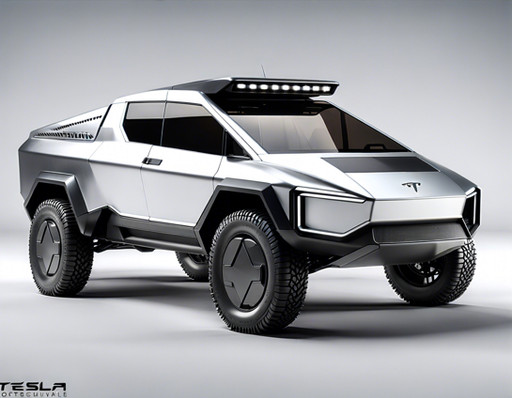HOME | DD
 TheDomehead — TLL-5S1 Mobile Science Lab
TheDomehead — TLL-5S1 Mobile Science Lab

#alien #antenna #apc #arm #commonwealth #extra #eye #eyeless #laboratory #less #limb #mobile #multi #multiarm #progenitor #science #terrestrial #teshkava #tolesian
Published: 2024-06-25 03:50:22 +0000 UTC; Views: 2659; Favourites: 39; Downloads: 0
Redirect to original
Description
When the Expeditionary Flotilla discovers a new planet that they can hand off to the deemed worth colonizing by the Planetary Colonization and Development Commission, the next step is to verify and determine the viability of the planet's colonization. That's where the TLL-5S1 Mobile Science Lab comes in. The lab is a self-contained unit capable of sustaining a small fire team of soldiers and scouts as they conduct their surveillance and studies. Specifically, it was designed to handle initial forward experimentation by the Expeditionary Flotilla to confirm long-distance probe readings before the Commonwealth made more significant investments. To keep this variant simple, it was built on a reliable TLL-5 chassis and, thus, can be readily delivered by shuttle. A typical mission generally has a crew of a mission commander, a soldier who acts as a guard, and two mission specialists. Typically, specialists are Imperial Marine xenobiologists and xenogeologists. Two more hang out on a shuttle, which burns back into orbit until it's time to pick the lab back up. All crew are trained as basic infantry.
As mentioned earlier, scientific instruments are designed to provide preliminary results to determine whether or not further investigation is worth it. As such, instrumentation is limited to essential items that can answer the opening questions of atmospheric analysis, geology, weather science, and xenobiology analysis for obvious incompatibilities with Teshkavan physiology.
As such, the TLL-5S1 is equipped with an anemometer, multispectral pulse electronically scanned phased array radar, seismographs, and a spectral analysis machine. Additional weather stations can be assembled and set up as needed. A small airlock in the back allows ingress and egress into hostile environments. Some equipment and lab terminals are available outside the vehicle for convenient field access. Additionally, various processing tubes enable samples to be delivered to the vehicle hot box, allowing one operator to process samples collected from outside the vehicle.
Crew accommodation is provided by a 2x2 rack of berths that double as crew common areas when folded up. A table, pantry, refrigerator, and rehydration station with kitchenette provide the crew with a varied, if somewhat dulled, diet. Water is extracted from surface sources and purified through ionic, osmotic, and UV filtration systems from the atmospheric, surface, or recycled water from the onboard waste disposal systems, of which the facility has a couple of small hybrid shower/toilet lavatories. Basic medical infrastructure is provided to stabilize an injured compatriot should an accident, or worse, arise. However, Teshkava heal fast thanks to their artificially enhanced biology, so anything more advanced is rarely needed.
To ensure that the mission can be completed and that sending such vehicle for scouting will be viable, the lab is fitted with 3D printers and a catalog of Imperial Light and Machine Works' design blueprints, it can make exact recreations of all ILMW equipment that would typically roll off an assembly line, even advanced microchips and alloys through ionic laser deposition and welding. This allows for the slow but reliable rebuilding and recreation of Tolesian equipment and parts. Spares are kept of commonly expended items such as sampling equipment, life support equipment, and other impractical to-recreate modules such as 3D printer heads, specialized tools, and unique components.
While ostensibly not for combat, the Commonwealth deploys these specially-made vehicles with various weapons for unexpected contingencies or situations. The only built-in armament is a standard heavy machine gun mounted on a turret on the edge of the lab module. Other weapons include an inbuilt armory underneath berths as well as a centralized weapons storage on the floor containing grenade launchers, guided and unguided missiles, and other explosives in a blowout-tolerant bin. The HMG can be reloaded through the airlock or, in dire emergencies, the hatch on the roof. However, that risks contamination of the entire vehicle. The armor of the lab is light but retains the TLL-5's resistance to light cannon on the front and is resistant to ultra-heavy machine guns along the remainder of the vehicle. A V-shaped hull along the bottom provides mine protection.
The vehicle's performance is comparable to an overweight version of the commonly deployed TLL-5A1 armored personnel carrier. The power pack is the same 375kw fuel cells, though with an additional pair to deal with the increased power draw of the equipment and to provide redundancy. While tracks can be stowed and fitted for exceptionally rough terrain, one of the sacrifices of this vehicle is the loss of any amphibious capability, which requires the crew to have some planning while orbiting to ensure that a vehicle can achieve the mission's objectives. Despite that, field trials and analysis show that the overbuilt magnetic suspension handles the vehicle amazingly, allowing it to tuck and counteract forces and create a "scarily smooth ride." On Arazi, these capabilities kept a lab of indigenous Kumlarin for the duration of the first contact incident.
----
Drawn by the ever awesome Hard_Lighter . Thanks again man!

























